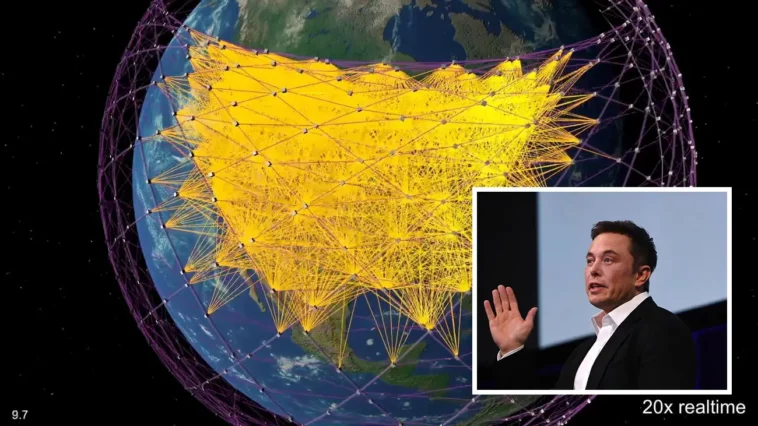Occasionally, radio blackouts are caused by solar radiation and coronal mass eruptions (CMEs) when the sun nears the apex of its solar cycle. Even though these geomagnetic storms aren’t very big, a big one has been coming for a long time and could do a lot more than just turn off the radio. According to Space.com, this may cause space junk and satellites to be pushed off of their predetermined orbits, making it weeks until we see them again.
We have been updating you on solar surface activity over the last several weeks, including the size of the sunspots that have been forming and the solar flares that our star has been emitting. They have been keeping an eye on sunspot activity since they are a sign of unstable space weather, which might have an enormous effect on our satellite communications and GPS systems.
How satellites are affected by geomagnetic storms
An early geomagnetic storm wiped out 40 of the company’s satellites, which had been launched into low orbit by the Falcon 9 rocket, just after their perigees, or closest points to the Earth. These satellites were unable to be raised into higher orbits by SpaceX due to the ensuing storm, and they crashed back into the atmosphere where they burnt up.
But the worst effects of the electrically charged storms don’t simply affect new satellites. In addition to hundreds of pieces of debris from previous space accidents that are floating about, the area immediately well above Earth is littered with garbage of all kinds, including wasted rocket stages and abandoned spacecraft.
The ISS and satellites are in danger of colliding with them and often engage in collision avoidance techniques to avert a crash. The SSN, which maintains a database of objects bigger than 10 cm in diameter that are now drifting in low-Earth orbits, may tell you where a piece of space junk or a retired satellite is circling.
A strong solar storm might alter that
Solar scientist Tom Berger told Space.com that a strong solar storm is packed with masses of energy that may move objects in the Earth’s atmosphere by even a few kilometers. Space debris lacks a self-reporting system like the GPS systems that newer satellites have, which can instantly broadcast their locations when navigation is restored.
It might take a few weeks after a strong solar storm for the radar to scan, find, and classify the objects again for the SSN, which operates by scanning the sky with its radar. The satellites’ positions are not the only thing that changes. NASA’s space weather forecaster, Bill Murtagh, says that the extreme heating of Earth’s upper atmosphere may have a significant impact on how much drag spacecraft sense at certain altitudes.
According to information provided by SpaceX on the satellites it lost, the geomagnetic storm increased drag in the atmosphere by as much as 50%. Even after the business moved the satellites to reduce drag, they were still facing problems with up to 40 out of the 49 satellites launched failing to raise their orbits, and the storm wasn’t even a particularly large one.
Tense skies, increased dangers
Astronomers lost sight of hundreds of satellites for days on end in 2003 during the most recent significant solar storm to affect Earth. A few thousand objects existed in space at the time, and there were no known collisions.
The scenario is substantially different today, 20 years later. Since then, there is now four times as much debris in low Earth orbit, raising the possibility of a space catastrophe. Despite the possibility that these satellites may escape collisions on their own, their sheer number exponentially raises the possibility of an unavoidable cascade of collisions.
The effect of changes in the space environment on the drag that spacecraft encounter is still a mystery to researchers. It could take another five years for science to correctly simulate this, according to Berger, who spoke to Space.com. Will the wealthy businessmen, however, wait till science is prepared, or will they use CubeSat constellations to brighten the night sky and provide high-speed internet?
Source: Space.Com, Interesting Engineering




